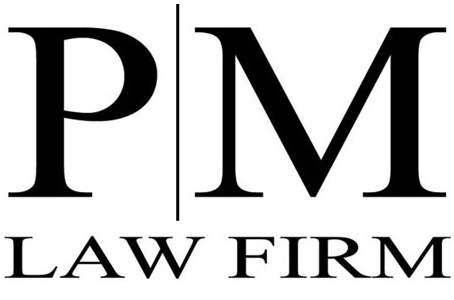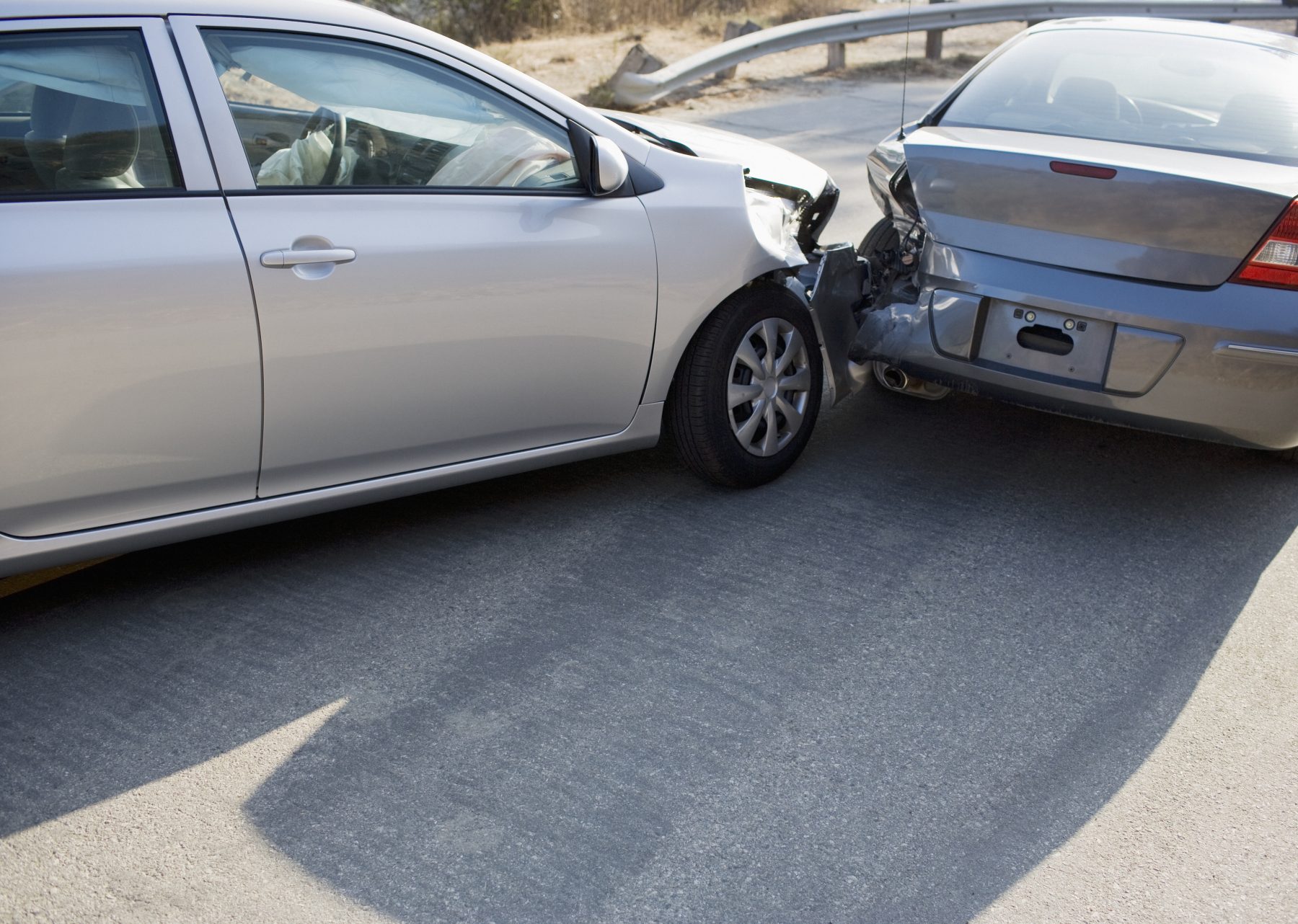Do you know who’s at fault in a rear-end collision? For most driver’s, they’d guess that the driver who rear-ends a vehicle is at fault, but that may not always be the case. Many car accidents have extenuating circumstances that can place the majority of the fault on the driver of the front car. Before you call your lawyer, check out the information below which has been put together by our attorneys here at the PM Law Firm. Whether your the rear driver or the front driver, we can help you determine rear end collision liability.
Which type of car accident is the most common?
A rear-end car accident is an auto accident where at least one driver is hit from behind, and they are the most common type of car accident. According to the NHTSA, 29 percent of all crashes are the result of one driver hitting the back end of another vehicle. Unfortunately, who’s at fault for the accident isn’t always clear because it’s not always the rear driver who does the rear-ending.
Texas Is a Fault State
States tend to fall into one of two categories when it comes to car accidents and rear end collision liability. There are no-fault states, where the insurance company pays for injuries, medical expenses and potential funeral costs for their own policyholder, and there are at-fault states in which the insurance company for the driver who is more than 50 percent responsible for the accident pays for the repairs and any medical bills.
Texas is a fault state when it comes to insurance claims. This means that one driver may be 100 percent responsible for the accident or both drivers may be partially responsible for the accident. When both drivers are determined to be partially at fault for the accident, the insurance company may only pay out a certain percentage of the claim, and when the amount doesn’t cover the injuries, medical expenses, lost wages and pain and suffering, you may need the help of a car accident lawyer to get what is rightfully yours after your car accident.
Most Common Rear-End Collision Scenarios:
While the driver who does the rear-ending is most often at-fault in a car accident, that’s not always the case. It really depends on the circumstances surrounding the collision. Here at the PM Law Firm, we can help you determine if you are receiving the compensation you deserve after your rear-end car accident, whether you were the front driver or the rear driver.
You Were Stopped at a Stop Light or Intersection and Rear-Ended
If you were stopped at an intersection, stop light or stop sign and rear-ended, you may not be at fault for the car accident. This is because the driver who rear-ended you may not have been paying attention to the light or your vehicle and failed to stop in a timely manner. If this happened to you and the insurance company is refusing to pay what your claim is worth, you’ll need the services of our personal injury lawyers in order to pay for your medical bills, pain and suffering and lost wages.
A Driver Slammed on His or Her Brakes and You Rear-Ended Them
This can be a tricky scenario. You were driving on a road or highway, and the driver in front of you slammed on his or her brakes. As a result, you could not stop in time and rear-ended a vehicle. In this scenario, there are complicating factors that determine negligence. Did the driver suddenly stop because another vehicle pulled out in front of them? Did an animal run out into the road? Were you following too closely just prior to the accident? In this scenario, it can be hard to determine who was partially or totally at fault, and your insurance company may not be very much help, which means you may need the services of a an experienced car accident attorney in order to determine the rear end collision liability and get you the money you need to repair your car, pay your medical bills and cover your lost wages.
Traffic Suddenly Slowed and You Were Rear-Ended Hard Enough to Rear-End Someone Else
In this scenario, you were paying attention to the road, and you slowed down along with the traffic in front of you, but the driver behind you wasn’t paying attention and rear-ended your vehicle hard enough to cause you to slide into the vehicle in front of you. In this scenario, you were rear-ended, and you rear-ended someone else. With multiple drivers and vehicles involved in this accident scenario, it may be hard to determine which driver was more than 50 percent at fault. Was the driver behind you speeding? Did your brakes fail? Was the roadway slick with rain, or where you entering a construction zone? All of these factors must be thoroughly examined by an experienced personal injury lawyer to make sure you get the right amount of compensation.
The Car’s Brakes Malfunctioned
This may be considered negligence because one driver did not get his or her brakes repaired in a timely manner, and it resulted in that driver rear-ending someone else. However, if the brakes on the vehicle were recently replaced, the accident may not actually be the fault of the driver. Instead, it would be due to faulty workmanship. In order to determine if the vehicle’s brakes failed due to lack of maintenance or lack of a quality repair, it can take a lawyer to get the facts.
The Driver’s Vehicle Didn’t Have any Brake Lights
In this scenario, the driver that rear-ended another vehicle did so after that vehicle stopped, but the brake lights on the front vehicle were not functioning at the time. If you were the rear driver, this accident may not be entirely your fault, especially if you were obeying all the traffic laws at the time and not speeding. However, your insurance company may want to automatically accuse you of being the at-fault driver.
A Car Was Stopped in the Middle of the Road
When a car is stopped in the middle of the road due to a breakdown and the driver fails to move the car out of the roadway, the resulting rear-end accident may not be your fault. This is because drivers who experience problems on the roadway are supposed to move their vehicles to the side of the road and out of the traffic flow in order to prevent their car from becoming a road hazard. If you rear-ended a vehicle that experienced a breakdown or flat tire and the driver failed to move the car out of the roadway, the accident may not be entirely your fault.
Most Common Injuries That Occur in Rear-End Collisions:
Rear-end collisions can cause significant injuries that result in missed days at work and high medical bills. In some instances, you may not even be able to return to work. When this happens, you can count on us to fight for you so that you can get the money you need to pay all your accident-related expenses and heal from your injuries.
Whiplash
Whiplash is the most common type of rear-end car accident injury, and the symptoms can range from mild to severe. If you have neck pain, stiffness, headaches, an inability to concentrate and upper back and arm pain after your accident, you may have whiplash, which may need months of treatment before your symptoms subside and you are able to return to your normal daily routines and work.
Traumatic Brain Injury
Rear-end car accidents can cause many different types of traumatic brain injuries, including concussions, seizures, severe headaches and migraines and ringing in the ears. If your head impacted the dash or another object in the car, you may have a traumatic brain injury that will need long-term medical treatment.
Broken Bones and Dislocations
While your seat belt does protect you in the event that you are involved in an auto accident, it cannot prevent all injuries. You may still experience broken bones, like a cracked rib, broken wrist and broken kneecap. You may also experience a dislocation, especially in the shoulder that was held back by the seat belt. If you have shoulder, chest, rib, knee or arm pain after your accident, you may have a dislocation or a broken bone that will need immediate and ongoing medical attention.
Facial Disfigurement
When you’re involved in a rear-end collision, objects may fly through your vehicle and severely cut your face, or you may be cut by flying windshield glass or the airbag, which can result in facial disfigurement and deformity that cannot be quickly or easily repaired. It could even impact your ability to move your facial muscles, speak and see, especially if you experience a broken eye socket or jaw.
Spinal or Back Injury
The force placed on the back during a rear-end collision can wreak havoc on your back, resulting in spinal cord injuries, pinched nerves and herniated discs. These types of injuries can leave you unable to go to work and unable to perform your daily tasks. You may even spend months in the hospital if your back injury is severe and requires surgery. This can result in extremely high medical bills for which you may not receive adequate compensation. To ensure all your medical bills and accident-related expenses are covered, make sure to contact our Texas attorneys.
What should I do after a rear-end collision?
After your rear-end collision, you should always take pictures of the accident if you are able, call the police and file a police report, and call your insurance company to report the accident and file a claim. In addition, if you suspect you’ve been injured in the auto accident, you should seek treatment at the local ER and get all the documents and findings from your ER visit. All of this information will be needed by your insurance company and your attorneys so that they can thoroughly investigate your case, determine how much it is worth and get you the cash you need to cover all your accident-related expenses.
Been in an accident in Humble, TX?
When you’ve been hurt in a car accident, you can count on us to gather the facts, present them to the other insurance company and aggressively fight for your rights in court. To get a consultation from one of our Humble, TX car accident attorneys, click the button below.

